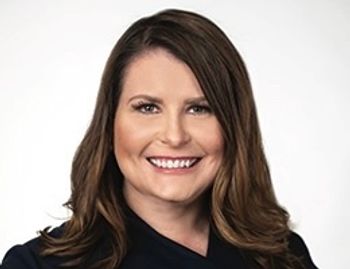
Algorithm-Driven Wearable Device Helped Patients Expend Less Energy
Harvard University researchers said their findings could help improve wearable robotic devices.
Image has been resized. Image courtesy of Seth Kroll/Wyss Institute.
The problem is inherent not to technology but people: Everyone walks differently. On the surface, that doesn’t appear to be an issue, but the variability in how humans move spells trouble for developers and users of wearable robotic devices, which are required to be customized, with great effort and cost, for each patient.
A machine learning algorithm could be the solution. Researchers at Harvard University’s John A. Paulson School of Engineering and Applied and Sciences
In their research,
“This new method is an effective and fast way to optimize control parameter settings for assistive wearable devices,” said Ye Ding, co-first author of the study and a postdoctoral fellow at Harvard. “Using this method, we achieved a huge improvement in metabolic performance for the wearers of a hip extension assistive device.”
The machine learning algorithm was designed to “rapidly identify” control parameters that most efficiently minimize energy exertion during walking. Pinning down those parameters was once a tedious process, performed for each wearable user, requiring manual tuning, said Myunghee Kim, a co-first author and postdoctoral fellow at the school. “Before, if you had 3 different users walking with assistive devices, you would need 3 different assistance strategies,” Kim noted.
But with “human-in-the-loop optimization,” the researchers leveraged real-time insights regarding breathing rates and other signs to adjust the device’s control parameters. After identifying those points, the algorithm fed guidance regarding the best timing and location for movements to the exosuit. The new findings suggest that these technologies can teach systems how to do this in as little as 20 minutes.
The team first used “Bayesian Optimization”—the algorithm, which was developed in such a way to optimize “noisy performance signals with very limited data”—in another study, which was published last year, according to Harvard.
Researchers said this is but an early step in a longer journey to get the most bang out of wearable devices.
“Optimization and learning algorithms will have a big impact on future wearable robotic devices designed to assist a range of behaviors,” noted Scott Kuindersma, PhD, a computer science professor at Harvard who co-led the project. “Extending these ideas to consider more expressive control strategies and people with diverse needs and abilities will be an exciting next step.”
Next, the researchers intend to home in on devices that assist multiple joints at once.
Related






















































































